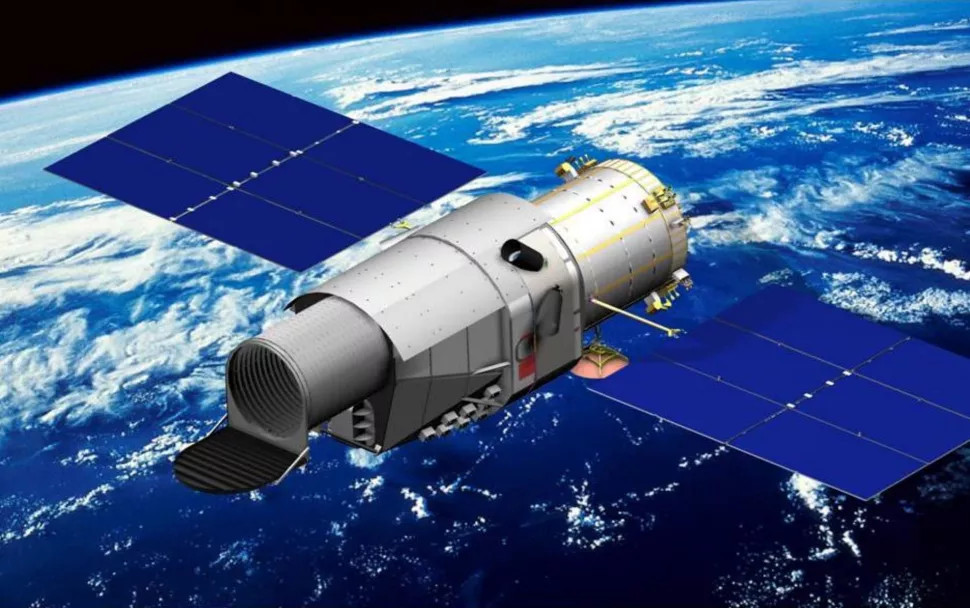China Announces Its new Flagship Space Telescope Mission

Distant galaxies, dark matter, dark energy, and the origin and evolution of the universe itself are some of the many scientific goals of China’s newly announced space telescope. If all goes according to plan, the China Space Station Telescope (CSST) will blast off atop a Long March 5B rocket sometime in late 2023. Once in a safe orbit, CSST should begin observations in 2024. Judging by these research topics, it looks like the Chinese Academy of Sciences is throwing down an impressive scientific gauntlet for itself and its astronomers.
What It Means to Have a Space Telescope
Owning and operating a space telescope really opens the doors to a treasury of information about the universe. Certainly, that’s what motivated the creation of the Hubble Space Telescope (HST). The dream of cosmic exploration motivated Hermann Oberth in the 1920s to write semi-science-fictional treatises about orbiting telescopes on asteroids. In his view, astronomers would live and work in space while using the telescope for extended periods of time. Their view would be unobstructed by Earth and its atmosphere. That vision inspired a number of later scientists to start planning a space telescope for real. Their work culminated in HST, the first of the so-called “Great Observatories” lofted to orbit. The others are Chandra X-Ray Observatory, Compton Gamma Ray Observatory, and Spitzer Space Telescope.

Scientifically, orbiting space telescopes offer huge payoffs across a wide range of the electromagnetic spectrum. For example, before HST, no one really had a good idea of the extent of galaxies in the Universe. The famous Hubble Deep Field views let astronomers observe stars and galaxies as they were shortly after the Big Bang, in both visible and infrared light. HST revealed glimpses of the large-scale structure in the cosmos and objects as small as exoplanets, comets, and asteroids. All the Great Observatories set the stage for new generations of orbiting instruments, such as the James Webb Space Telescope, the European Space Agency’s GAIA, NASA’s WISE telescope, and now, the CSST.
China Enters the Space Telescope Fray
Given the potential scientific rewards, it’s not surprising that China is joining the “big space telescope club”. It’s also a source of national pride, especially if they can “out-Hubble Hubble”. For example, once CSST is operational, Chinese scientists hope to survey the sky and observe more than a billion galaxies. Their instruments should let them get highly precise measurements of galaxy shapes, positions, and brightnesses. They’ll use the telescope to go after exoplanets, starbirth regions, and other distant objects, gathering incredible amounts of high-resolution data.
China’s astronomers hope their telescope will provide, as HST has done and JWST will do, more insight into the extent and distribution of dark matter. It might even give them better clues about the dark energy that affects the expansion of the Universe. And, as HST and other telescopes have been, CSST will be a point of inspiration. It will, its designers hope, show new generations of Chinese scientists how to explore the cosmos.
Explore CSST: a Next-generation Space Telescope
So, what do we know about CSST? Picture in your mind a giant orbiting observatory. It’s about the length of a three-story building and the width of a school bus. It has a 2-meter aperture and a three-mirror array set in an off-axis configuration. This observatory has a state-of-the-art survey camera, multi-channel imager, integral field spectrograph, cool-planet imaging coronagraph, and a terahertz receiver. The telescope can scan the sky using 30 81-megapixel detectors, and it is sensitive to near-infrared, visible, and near-ultraviolet light.
That’s just a small taste of what CSST promises to do and be, according to scientists at the Academy. Not surprisingly, they often compare it to Hubble and its 32 years of breathtaking observations. If the telescope goes up as planned, it will definitely surpass HST in many ways.
Li Ran, project scientist for CSST’s Scientific Data Reduction System, pointed out that HST’s field of view is small compared to the CSST’s, which is 300 times larger. Where Hubble sees a small part of the sky at one time, CSST will see a much bigger picture. Li used the analogy of photographing a flock of sheep to explain its capabilities by comparison. “Hubble may see a sheep but the CSST sees thousands, all at the same resolution,” he said in a press release statement.
An Observatory with Its Own Service Bay

One of the most unique aspects of CSST is where it will go in space. Originally the telescope was going to be attached to the Tiangong space station, but that changed. For one thing, there’s too much chance of cross-contamination from spacecraft coming and going. For another, CSST is so sensitive that it can’t be attached to the station. Vibration, stray light, and possible obstructed views would interfere with the telescope operations. Current plans are to put it in the same orbit as the station (at about 265 miles altitude) but a safe distance away.
When the observatory needs any kind of servicing, it can maneuver over to Tiangong for refueling and other maintenance activities. That plan reflects a lesson learned from HST’s 70’s-era design. NASA paid for five on-orbit visits by astronauts to refurbish the observatory. So, making the CSST serviceable by the station astronauts turns out to be a money-saver for the Chinese.
CSST (also known as Xuntian and Chinese Survey Space Telescope) is currently under final construction. It has been in planning and development since 2010.
For more information:
Flagship Chinese Space Telescope to Unravel Cosmic Mysteries
Chinese Survey Space Telescope Technical Presentation (2021) (PDF)
The post China Announces Its new Flagship Space Telescope Mission appeared first on Universe Today.
Universe Today
Go to Source